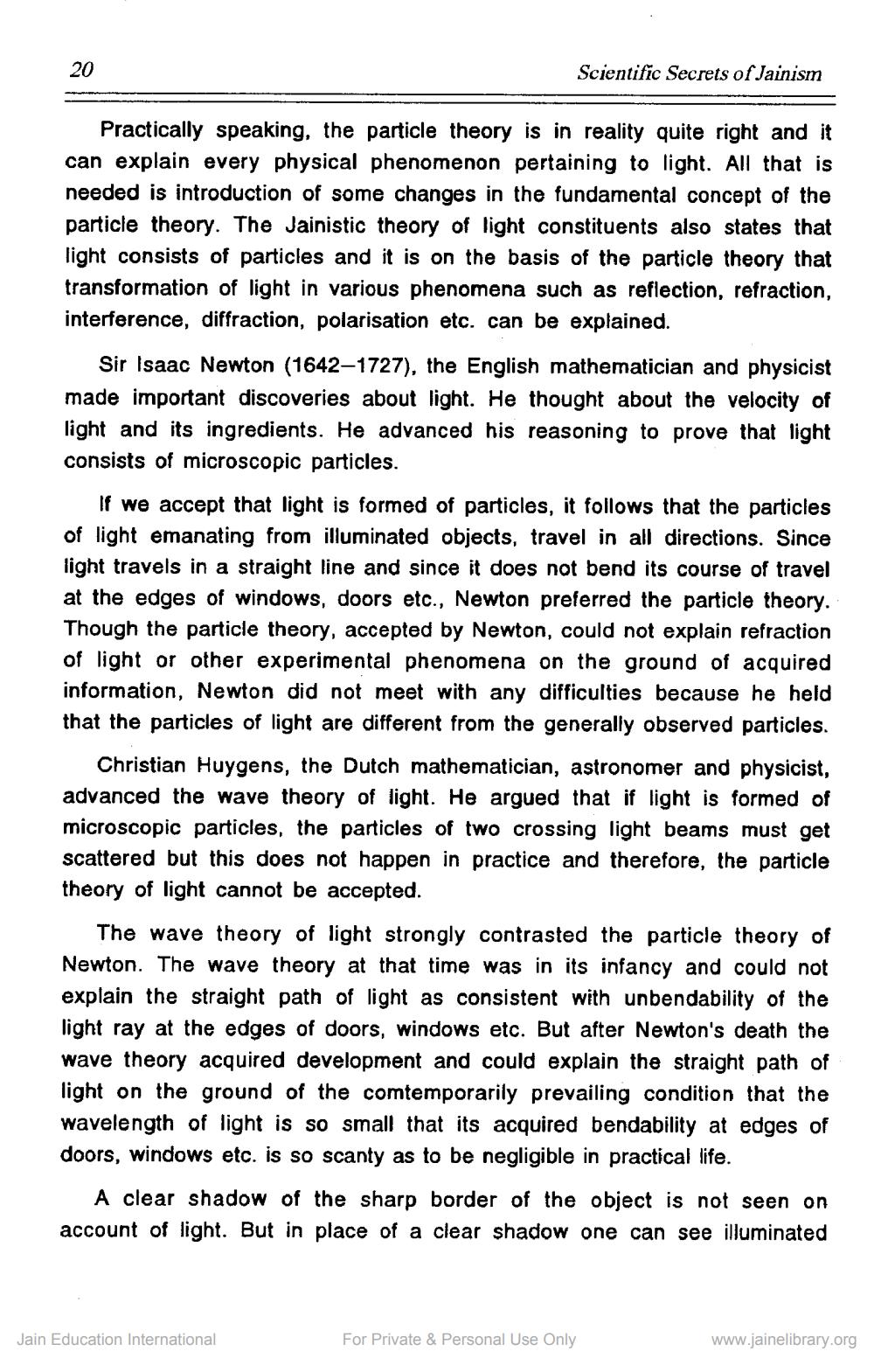________________
20
Scientific Secrets of Jainism
Practically speaking, the particle theory is in reality quite right and it can explain every physical phenomenon pertaining to light. All that is needed is introduction of some changes in the fundamental concept of the particle theory. The Jainistic theory of light constituents also states that light consists of particles and it is on the basis of the particle theory that transformation of light in various phenomena such as reflection, refraction, interference, diffraction, polarisation etc. can be explained.
Sir Isaac Newton (1642–1727), the English mathematician and physicist made important discoveries about light. He thought about the velocity of light and its ingredients. He advanced his reasoning to prove that light consists of microscopic particles.
If we accept that light is formed of particles, it follows that the particles of light emanating from illuminated objects, travel in all directions. Since light travels in a straight line and since it does not bend its course of travel at the edges of windows, doors etc., Newton preferred the particle theory. Though the particle theory, accepted by Newton, could not explain refraction of light or other experimental phenomena on the ground of acquired information, Newton did not meet with any difficulties because he held that the particles of light are different from the generally observed particles.
Christian Huygens, the Dutch mathematician, astronomer and physicist, advanced the wave theory of light. He argued that if light is formed of microscopic particles, the particles of two crossing light beams must get scattered but this does not happen in practice and therefore, the particle theory of light cannot be accepted.
The wave theory of light strongly contrasted the particle theory of Newton. The wave theory at that time was in its infancy and could not explain the straight path of light as consistent with unbendability of the light ray at the edges of doors, windows etc. But after Newton's death the wave theory acquired development and could explain the straight path of light on the ground of the comtemporarily prevailing condition that the wavelength of light is so small that its acquired bendability at edges of doors, windows etc. is so scanty as to be negligible in practical life.
A clear shadow of the sharp border of the object is not seen on account of light. But in place of a clear shadow one can see illuminated
Jain Education International
For Private & Personal Use Only
www.jainelibrary.org




